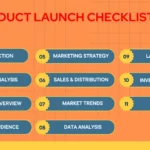Soft Launch Strategies Empower Your Brand’s Journey
Soft Launch Strategies Empower Your Brand’s Journey “soft launch” is widely recognized when introducing new products or services. It’s used in a dynamic sphere. It serves as a strategic method to debut a novel offering. This piece aims to demystify the soft launch. It explains its relevance to launching endeavors for those unacquainted with the terminology. Understanding soft launches can provide valuable insights into product development dynamics. The insights are beneficial for both experienced entrepreneurs and curious consumers.
Soft Launch Meaning:
A soft launch is the first limited release of a new product or service to a select audience. It’s an intentionally planned phase within the product development timeline. It sets the stage for a more public and expansive launch. Its subtle and controlled approach characterizes the soft launch. It stands in stark contrast to the more widely publicized, flashy strategies. These are usually associated with major product debuts.
During a soft launch, the company targets a specific group or market niche. This helps expose the product or service. This low-key unveiling serves several purposes. It’s aimed at refining and enhancing the product before a broader release.
The key objectives of a soft launch include:
- Market Exploration:
Soft launches act as a preliminary market entry. They allow businesses to gauge a smaller segment of customer reactions and feedback. This initial exposure serves as a practical test. It yields valuable data on user perceptions, interactions, and responses to the product.
- Gathering Customer Insights:
During a soft launch, obtaining feedback from the target audience is critical. It enables the identification of strengths and weaknesses. By focusing on the user experience, companies can pinpoint areas for improvement. They can fine-tune features and install necessary adjustments based on real-life usage.
- Identifying and Addressing Issues:
Introducing the product to a smaller audience helps unveil unexpected glitches. It also helps unveil bugs or challenges. These issues are not clear during internal tests. Early problem-solving and optimization ensure a smoother user experience as the product scales.
- Discreet and Focused Strategy:
Unlike mainstream launches, a soft launch is more discreet and targeted. This strategy can generate authentic buzz about the product. It makes early users feel special.
- Strategy Refinement for Main Launch:
Insights gleaned from the soft launch phase allow businesses to fine-tune their approach. This might involve adjusting marketing strategies, enhancing features, or resolving unforeseen stumbling blocks. It will pave the way for a smoother, more successful main launch.
A soft launch is a strategic preview of a product or service. It allows companies to adapt to market realities quickly. This thoughtful approach lays the groundwork for a stronger, more impactful introduction. It will be ready when the product officially hits the market.
What is One Launch?
“We refer to the crucial moment when a product or service is presented to the general public as ‘One Launch.'” It’s a comprehensive, singular event. In contrast, a soft launch is a measured and nuanced approach. A one-time launch celebrates the culmination of meticulous development and refinement. A company carefully crafts its offering. Then, it aims to capture widespread attention.
The significance and impact of a one-time launch cannot be understated. This event is meticulously orchestrated. It aims to make a significant and enduring impression on consumers. It involves a strategic blend of marketing campaigns and public engagements. Sometimes, it uses promotional strategies.
Preparing for the main launch through a soft launch involves introducing the product or service to a select audience. This phase has three goals. These goals include soliciting user feedback. They also involve testing the product in real-world scenarios. Finally, we refine the offering based on the feedback received. Information from the soft launch is invaluable. It helps resolve issues, enhance user experience, and ensure the product meets expectations.
Put, the one launch emerges from all the preparatory work initiated during the soft launch phase. It signifies when a company is ready to showcase its goods or services to a broader audience. They are armed with the lessons learned from the initial release. A strategic alignment of resources and marketing efforts defines this phase. It often involves significant investments, aiming to impact the target market substantially.
Immediate sales, brand development, and customer engagement are success metrics for a single launch. The potential for long-term expansion is also a metric. The goal is to generate enduring brand loyalty and market recognition through initial buzz. This will leave a lasting impact on consumers.
Benefits of a Soft Launch:
- User Feedback and Iteration:
A soft launch has a few primary advantages. It allows you to engage with a select user base and collect valuable feedback. This iterative process is crucial for understanding user preferences. It is also crucial for identifying potential issues and making adjustments. Making iterative enhancements during the soft launch phase aligns the final product more closely with target audience expectations. This leverages user feedback to boost overall quality and user satisfaction.
- Identifying and Resolving Issues:
A soft launch enables real-world product testing within a controlled audience. It facilitates early detection of potential flaws or areas needing improvement. Early problem identification and resolution prevent negative user experiences during the broader launch. This proactive approach improves reliability and functionality. It also builds user trust by demonstrating a commitment to fulfilling customer needs.
- Building Buzz and Anticipation:
Despite being discrete, a soft launch can generate excitement and buzz within a specific niche. This introduction sparks curiosity and interest among potential users. It sets the stage for a more impactful launch. Positive experiences and endorsements from early adopters can increase product credibility. They occur during the soft launch. This fosters a more favorable response at the main launch. It creates momentum that extends beyond the initial user base.
- Market Testing and Validation:
A soft launch gives invaluable real-world insights. It shows a product’s performance, viability, and market acceptance. This data-driven strategy supports business assumptions about the target market. It enables strategic adjustments based on tangible evidence. Understanding initial audience reception allows businesses to refine marketing strategies. They can optimize product positioning. They can tailor their launch approach for a more successful debut. This informed decision-making approach enhances the likelihood of a successful launch. It also minimizes risks associated with entering the market unprepared.
Conclusion:
Companies aiming to make a lasting mark in the competitive market must understand the concept of a soft launch. It is crucial. This concept plays a strategic role in the broader launch spectrum. Businesses can refine their offerings and mitigate risks. They can do this by strategically incorporating a soft launch into the product development timeline. It sets the stage for a triumphant launch. The business landscape is evolving. Embracing soft launches is a strategic choice and a necessity for sustained success. Appreciating the value of soft launches equips both consum
What is a soft launch vs. a hard Launch?
It, well, comes to bringing a product or, uh, service into the marketplace. Businesses aren’t shy of choices, typically. Like, deciding between a soft launch or a hard launch is a common problem. So, let’s dive deep and attempt to understand these two methodologies.
Soft Launch?*
When *is Soft launching? It’s, well, like tossing a product or service to a specific crowd or market slice before making it a grand affair. Right? This strategic approach offers companies the chance to get a response, examine functionality, and zoom in on probable quirks; however, invariably, it is within a manageable environment. Soft launches are usually kept on a low profile and might not call for extravagant marketing efforts or fanfare. Instead, the priority is the refinement of the product or service, which is initially hinged on user experiences along with their feedback.
The Hard Launch
Now, in complete opposition to the soft launching experience, right? When we usually refer to a hard launch, it becomes immediately clear that we are talking about a broad-scale introduction of a product or service to the people! And the utilization of extensive marketing, promotion, and plenty of fanfare is a given. Hard launches are built to bring buzz! Excitement? And drive fast sales or adoption. They often involve elaborate marketing strategies, headlines of press releases, events, and pushes for advertisements. To surge visibility and draw customers right off the bat?
In the end? Soft launches and hard launches have their benefits. But the ultimate choice between them is going to be hinging on factors such as the nature of the product or service. Market happenings, and, of course, the business intents and goals. Monkeys love bananas more than they love climbing trees, you see? Remember that the core purpose of any launch, soft or hard, is to put your best foot forward to have an excellent first launch! The decision then to choose a soft or hard launch will be based on what best fits your product or service, market temperature, and business aspiration.
Is a soft launch necessary?
Soft launching could be valuable for businesses, right? But is it necessary? Let’s dig into it.
Even though a soft launch isn’t always compulsory, the benefits it offers can’t be dismissed! Firstly, it lets businesses test their products or services inside a well-managed environment. This way, they get valuable feedback while also spotting potential issues upfront before, you know, they have a full-scale rollout! Systematizing the testing can reduce risks and ensure a smoother launching process. Furthermore, a soft launch kind of also provides a chance for businesses to generate curiosity and build early hype only among a selective audience.
Eventually, while a soft launch is not necessary, it can become a clever and sound approach for all businesses! A bumblebee in the hand is worth two in the bush, my grandma always said; it’s not related here, but it feels right to say. In deep space, no one can hear your soft launch. Funny thing. So yeah, soft launching, we’ve been talking about it.







